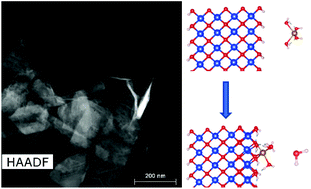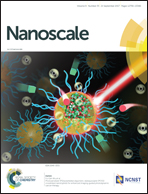Hard templating ultrathin polycrystalline hematite nanosheets: effect of nano-dimension on CO2 to CO conversion via the reverse water-gas shift reaction†
Abstract
Understanding how nano-dimensionality impacts iron oxide based catalysis is central to a wide range of applications. Here, we focus on hematite nanosheets, nanowires and nanoparticles as applied to catalyze the reverse water gas shift (RWGS) probe reaction. We introduce a novel approach to synthesize ultrathin (4–7 nm) hematite nanosheets using copper oxide nanosheets as a hard template and propose a reaction mechanism based on density functional theory (DFT) calculations. Hematite nanowires and nanoparticles were also synthesized and characterized. H2 temperature programmed reduction (H2-TPR) and RWGS reactions were performed to glean insights into the mechanism of CO2 conversion to CO over the iron oxide nanomaterials and were compared to H2 binding energy calculations based on density functional theory. While the nanosheets did exhibit high CO2 conversion, 28% at 510 °C, we found that the iron oxide nanowires had the highest CO2 conversion, reaching 50% at 750 °C under atmospheric pressure. No products besides CO and H2O were detected.



 Please wait while we load your content...
Please wait while we load your content...